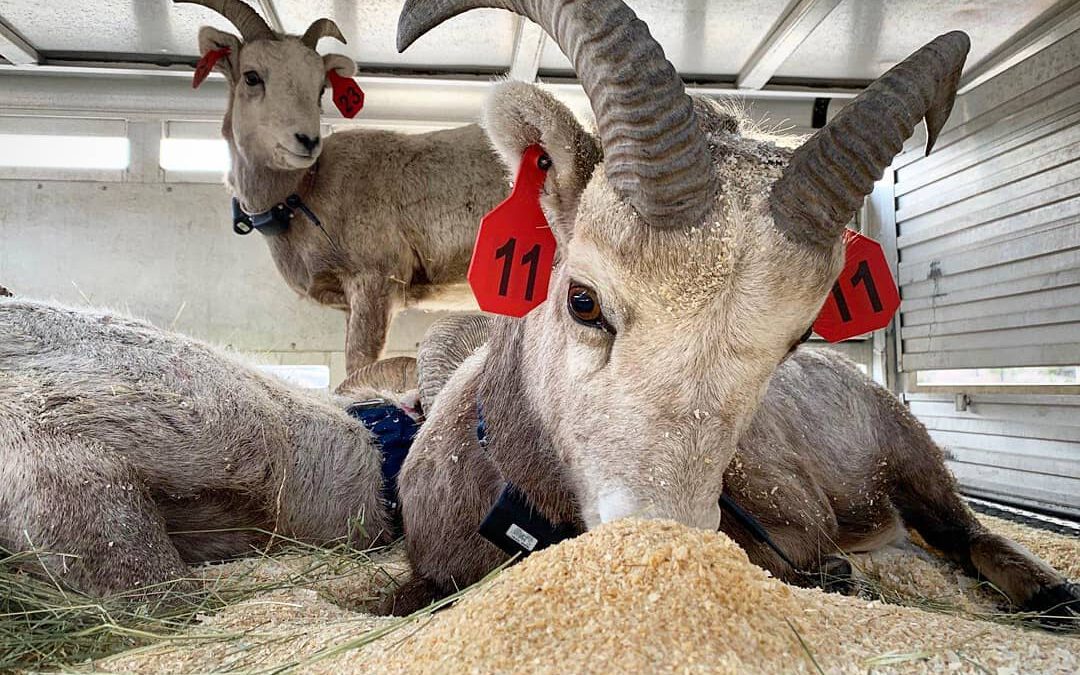The Utah Wild Sheep Foundation was founded in 1991 by Don Peay, Lee Howard, and Fred Morris. These great gentlemen wanted to do what they could to keep Bighorn sheep on the beautiful mountains and in the deserts of Utah.
With the help of the Utah Wild Sheep Foundation, Utah’s wild sheep populations have gone from less than 500 in just a couple of herds to now more than 5,000 wild sheep found in 28 different herds.
The Utah Wild Sheep foundation has been helping release bighorns back out into the wild. There is a nursery opening in Eastern Utah with the help of Young Living, a Provo-based essential oil company, to ensure that the wild sheep population continues. Utah is approaching 100 bighorn tags a year, the funds of which continue to help support the sheep population and the ecosystem that they live in.
The rejuvenated success of the Utah Wild Sheep population is due to the help of dedicated UDWR employees, the financial resources from generous Utah Wild Sheep Foundation donors, partners with the National WSF and SFW. These efforts require a tremendous amount of work to negotiate buyouts of domestic sheep, protect against excessive predation, poaching patrols, and other management activities.
About Bighorn Sheep in Utah
Bighorn sheep are native to North America. Archeological evidence indicates that bighorn sheep are well known to the prehistoric inhabitants of Utah. Historical records show the first European explorers and settlers in the state also confirm the abundance of bighorns.
There are three types of bighorn sheep in Utah. The Rocky Mountain bighorns are generally recognized to have inhabited Northern and Central Utah, whereas desert bighorns historically inhabited portions of the Great Basin in Utah and Nevada. California bighorn sheep reside on the western side of Utah.
Rocky Mountain Bighorns in Utah
Rocky Mountain bighorns currently exist in the northern and eastern part of the state. The current statewide population estimate for Rocky Mountain bighorns managed by the Utah Department of Wildlife Resources (UDWR) is approximately 1,500 sheep.
Desert Bighorns in Utah
Desert bighorns inhabit the slick rock canyons, rocky slopes, and canyonland areas of southern Utah. Their diet consists of the same spiny shrubs that scrape the shins of hikers in those areas. The current population estimate for the desert sheep managed by the UDWR is nearly 2,900 sheep.
California Bighorns in Utah
California bighorn sheep reside on the western side of the state. They were recently introduced to Oak Creek, Stansbury and New Foundland mountain ranges.
Early Utah and the Start of the Die Off
Accounts from early explorers tell us that more than two million desert bighorn sheep once roamed the southwest. By the late 1800s however, bighorn sheep started disappearing or declining in many areas.
Native populations of Rocky Mountain bighorn sheep were nearly wiped out due to pioneer settlement (an issue we’re also facing today). In the 1960s there were a few scattered sightings of bighorn sheep in northern Utah. Factors contributing to their decline included competition with domestic livestock for forage and space, vulnerability to domestic livestock-borne diseases, habitat conversions from native grasslands towards shrublands due to excessive grazing and fire suppressions, and unregulated hunting. Utah’s desert sheep populations also struggled to survive civilization.
Whereas some herds suffered early extirpation, others remained relatively undisturbed until the 1940s and 1950s. In 1975, Utah’s population numbered around 1,000 sheep. This dramatic die-off was caused by hunters, settlers, and disease.
The Biggest Threat to Bighorns
In 1985 bighorn sheep started dying off due to disease. Bighorn sheep were coming in close contact with domestic sheep, bringing diseases back to their herds. Research has identified Mycoplasma ovipneumoniae (Movi) as the infection that typically triggers bighorn sheep pneumonia outbreaks. Movi will weaken their immune system which kills them when other diseases get in. Movi is commonly carried by healthy-appearing domestic sheep and goats, but infection of bighorn sheep may kill up to 80% of the herd in the initial outbreak alone. This is still a problem today and Utah Wild Sheep Foundation is trying to keep it under control, but young rams like to wander and can bring back the disease to their herds.
Bighorn sheep faced another die-off in 1998 when mountain lions were becoming an even bigger threat. The state of Utah with the help of Utah Wild Sheep Foundation removed numerous mountain lions from a 10-mile area along the Wasatch Front in just 18 months. Today, bighorn sheep still face the issues of disease and mountain lions. Diseases are the biggest issue that Utah Wild Sheep Foundation is trying to keep under control.
Join Us in Putting Sheep on Utah Mountains
Here at the Utah Wild Sheep Foundation, we are excited to help continue keeping wild sheep in the mountains and the desert of Utah. We continue to face the destruction of the natural habitat of the wild sheep and many other animals, but we will continue to help fight for these beautiful wild animals. Support these efforts by joining Utah Wild Sheep foundation today for an annual membership of only $40.

